Sciatica is a symptom of a problem in the spine, usually the result of a herniated disc or other types of spinal injury. The sciatic nerve is the longest in your body, running from your lower back to your feet. When this nerve is compressed or irritated by an injury or a problem with your spine, it can cause pain in any part of the leg from hip to ankle.
What Is Sciatica?
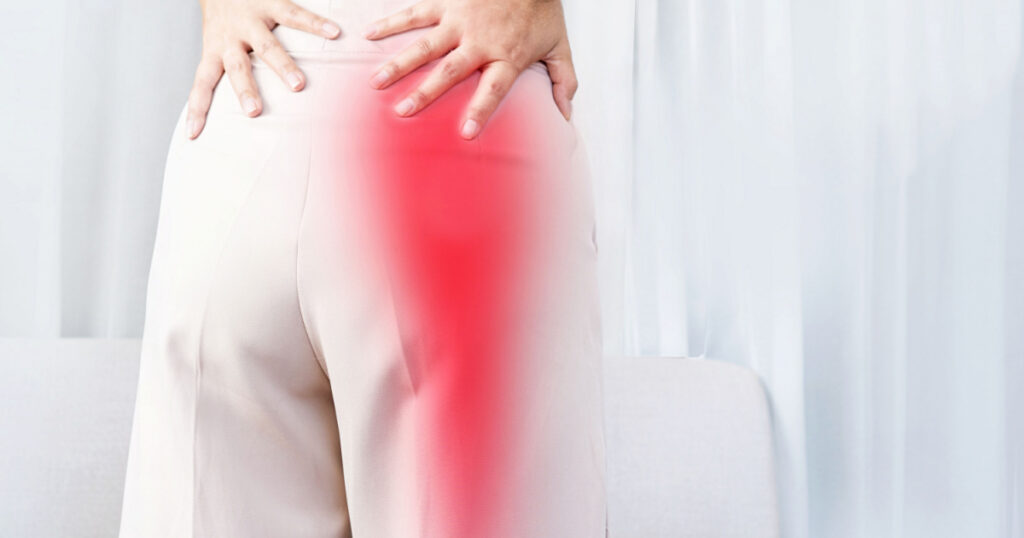
Sciatica is the name for pain that radiates along the sciatic nerve, which comprises a bundle of nerve fibers. The most common cause of sciatica is a herniated disk in your spine. As you age, disks become less flexible and more prone to bulging or rupturing. When this happens, pressure can be placed on nearby nerves, causing pain, numbness, and weakness in your legs or arms. (1)
Read More: 7 Things That Contribute to Fluid Retention And How To Manage Symptoms
14 Self-Help Tips for Sciatica That Truly Work

A typical episode of sciatica will last for about three weeks, but it can also go away as quickly as it comes on. If you’ve been diagnosed with sciatica, there are some things you can do at home that may help relieve your pain and speed up recovery time.
1. Ice pack

Use an ice pack on your lower back area for 10 minutes every hour while awake. If you’re sleeping, just try to sleep with it. This will help reduce swelling and pain associated with inflammation caused by irritation from sciatica. Use ice therapy for the first seven days, and be careful not to give yourself frost bite.
2. Heat therapy

After icing for the first seven days, apply heat (hot water bottle or heating pad) for at least 15 minutes but no longer than two hours. This will improve blood flow to the area to promote healing. Place a cloth barrier between the source of heat and your body, and make sure it is warm but not too hot so that you don’t burn yourself.
3. Movement

If you have sciatica, exercise will not make it worse. In fact, it can help relieve the pain in your back and leg. Exercise also helps to improve circulation to reduce inflammation, and speed up healing. It will strengthen your muscles to support your spine, improve mobility and flexibility in the area, increase blood flow to the area, and reduce the perception of pain. If moving seems to make the pain worse, talk to your doctor.
Read More: He Suddenly Had 4 Severe Dents Appear In His Head
4. Massage
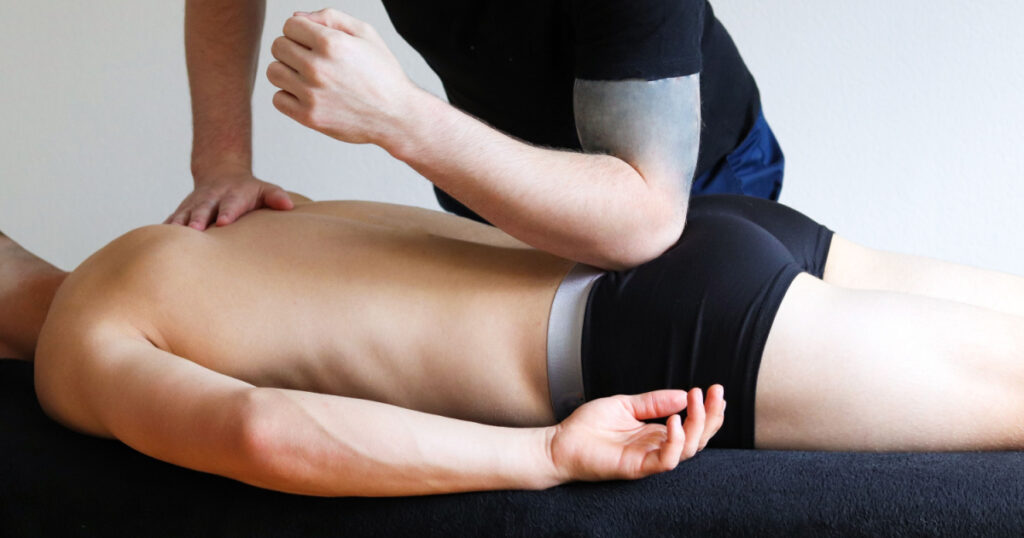
Massage can help to relieve pain and encourage healing by increasing blood flow. It can also improve flexibility and mobility of the affected area, reduce stress levels, improve sleep quality, and reduce anxiety. All of these things will help to promote healing. It also increases the body’s production of endorphins, natural painkillers that help relieve discomfort. Massage is a great way to prevent and treat back pain. It can also help with other types of pain, including headaches and joint pain.
5. Acupuncture
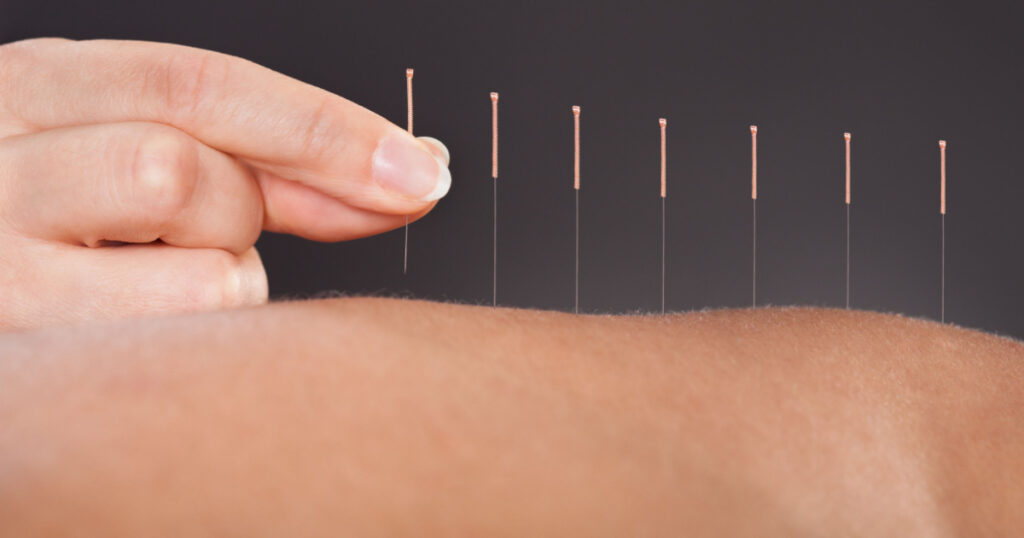
Acupuncture is another great way to reduce the perception of pain. It works by stimulating certain points on your body that are connected to nerves that send signals from the brain to other parts of the body. When these points are stimulated, it activates the release of endorphins, which help to relieve pain. Acupuncture also works by increasing blood flow to the area where you have been experiencing pain, which helps to deliver oxygen and nutrients that promote healing. (2)
6. Stretching

Stretching is another great way to reduce the perception of pain. It works by improving your range of motion, which can help to relieve tension in certain areas of your body. This helps to reduce any strain on those areas that may have been caused by poor posture or repetitive motions. (3)
There are specific stretches you can do for sciatic pain relief. These include glute stretches, spinal stretches, the “figure 4” stretch, hamstring stretches, and the pigeon pose.
Read More: Yoga for Sciatica: 8 Poses in 8 Minutes for Back Pain Relief
7. Chiropractic Care

Chiropractic care is another effective treatment that can help to reduce the pain caused by sciatica. It works by realigning your spine, relieving pressure on the nerves that travel down your back. A chiropractor will use gentle adjustments to improve mobility and relieve discomfort while also working to strengthen your muscles and ligaments.
8. Yoga

Yoga is another great way to reduce sciatic pain. It can help to strengthen your muscles and improve flexibility, which will help you to cope better with the condition and prevent future episodes. Particularly helpful yoga poses include downward dog and child’s pose.
9. Pilates

Pilates is a type of exercise that focuses on core strength and flexibility. It can be useful for reducing sciatic pain as it helps to strengthen your abdominal muscles, which can help to support the spine and reduce pressure on the nerves in your back.
Read More: How to Reduce Stress and Anxiety in 10-Minutes or Less
10. Avoid Long Periods of Sitting

Sitting for long periods of time can cause your body to stiffen up, which can put pressure on your spine and the nerves that run through it. Try to avoid sitting for more than 30 minutes without getting up to stretch or do some other activity.
11. Trigger Point Massage

Trigger point massage, also known as myofascial release, is a type of deep tissue massage that can be used to treat sciatica. It helps to break up the tight bands of muscle that are causing your pain and help them to relax. A professional can do it or you can learn to do it on yourself at home.
12. Anti-inflammatories

Anti-inflammatories, such as ibuprofen and aspirin, can help to ease some of the pain caused by sciatica. These medications work by reducing inflammation in your body, which is one of the main symptoms of this condition. They may also help to reduce swelling around the nerve root where it exits from the spine. You can also make dietary changes to eating more anti-inflammatory foods. (4)
13. Sleep on a pillow between your legs
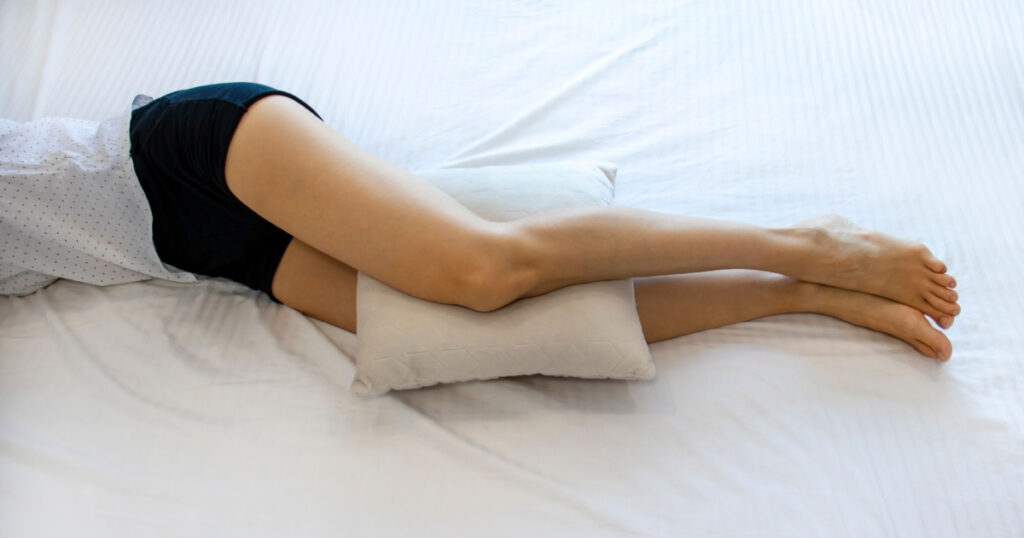
Sleeping on a pillow between your legs can help to relieve pressure on the sciatic nerve and reduce some of the pain caused by it. Using this method, you should place one leg over the other with a pillow placed between them when lying down. This will help keep your spine in alignment as well as reduce pressure on any areas that are causing discomfort.
Read More: How to treat H. Pylori Bacteria Causing Heartburn And Bloating + Natural Remedies
14. Physical Therapy

Physical therapy can help to reduce pain and inflammation caused by the sciatic nerve. This method involves stretching exercises, massage and heat therapy, and strengthening your core muscles. A physical therapist may also suggest using a foam roller or other similar tools to relieve tension in the muscles surrounding the area where they exit from your spine.
The Bottom Line
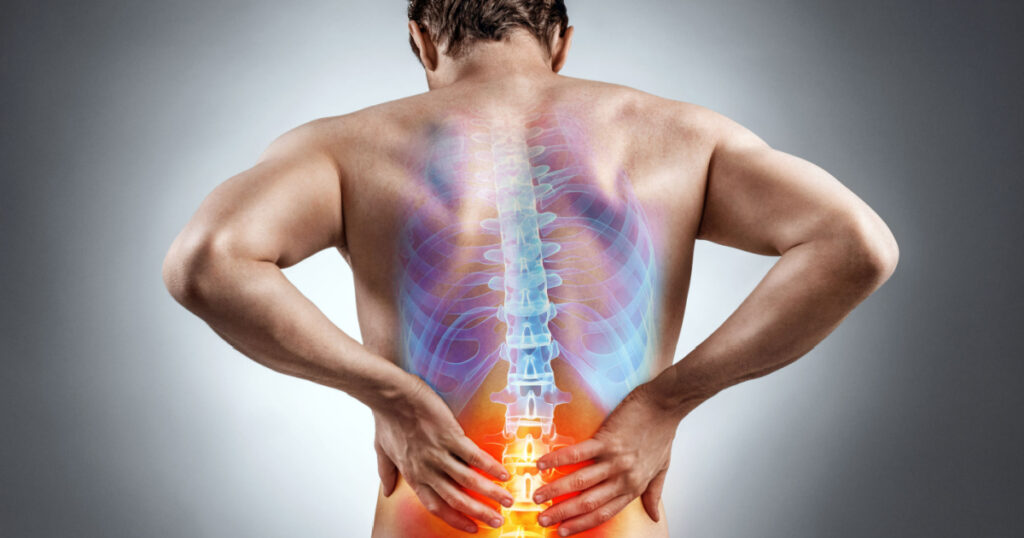
Sciatica is painful and makes life less enjoyable. It shouldn’t, however, be permanent. If your pain doesn’t subside after over three weeks, talk to your doctor. This way, they can help you come up with an action plan to solve the issue.
Disclaimer: This information is not intended to be a substitute for professional medical advice, diagnosis or treatment and is for information only. Always seek the advice of your physician or another qualified health provider with any questions about your medical condition and/or current medication. Do not disregard professional medical advice or delay seeking advice or treatment because of something you have read here.
Read More: Overthinking Is Bad For Your Health. It’s Time to Get Out of Your Own Head
Sources
- “Sciatica home remedies and self-care.” Harvard. April 21, 2020.
- “Sciatica Treatments and Home Remedies.” Everyday Health. Kristen Fischer. August 18, 2022.
- “9 Stretches for Sciatica Pain Relief.” Healthline. David Heitz and Erica Cirino. October 19, 2022
- “Sciatica.” Cleveland Clinic

